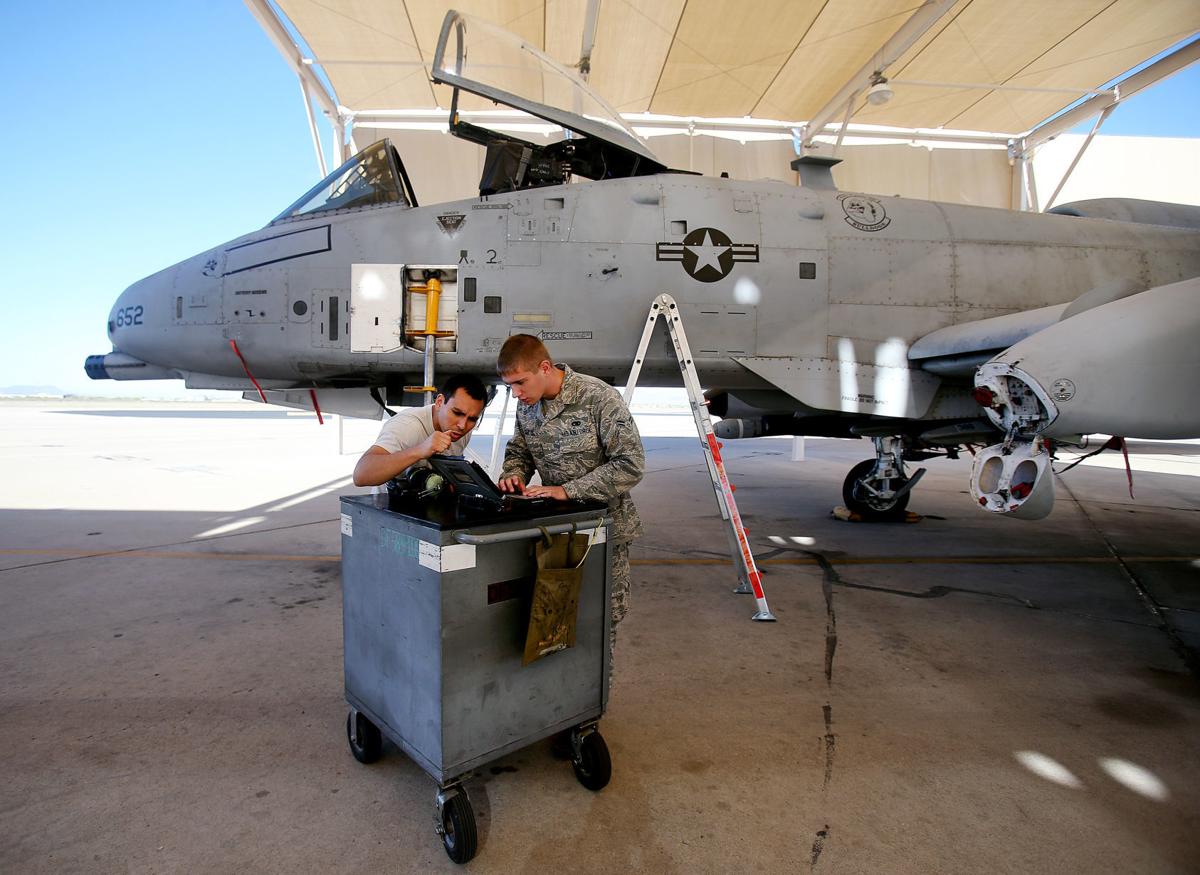Fiscal 2018 defense budget legislation still has a long way to go, but versions advancing in both houses of Congress would benefit Southern Arizona defense contractors and bases with increased funding.
The Senate Armed Services Committee, chaired by Arizona Sen. John McCain, R-Phoenix, passed its markup of the National Defense Authorization Act for fiscal 2018, including an overall increase to $700 billion and a roughly 15 percent increase in the base Pentagon budget, to about $640 billion.
On Thursday, the House Armed Services Committee passed its version of the NDAA. The House bill includes measures pushed by Arizona Rep. Martha McSally, R-Tucson, to fully fund and start replacing the wings of the Air Force fleet of A-10 Thunderbolt II ground-attack planes and to fund upgrades to the EC-130H Compass Call electronic-warfare fleet — two major missions at Davis-Monthan Air Force Base.
The Air Force has sought to retire both the A-10 and the EC-130H, which is based solely at D-M, over the last few budget years but has delayed those plans amid high demand for the aircraft and opposition in Congress.
Both budget markups would add money to buy more weapons made by Tucson-based Raytheon Missile Systems.
The NDAA, which sets spending policy for the Pentagon ahead of an annual defense appropriations bill, still must be passed by each chamber before inevitably heading to conference committee to reconcile the versions.
Here’s a look at some key Southern Arizona-related items included in the bills:
House version
- Full funding for the A-10 fleet, $103 million for new A-10 wings, $17.5 million for other necessary upgrades, and $6 million for safety inspections
- Full funding for the EC-130H e-warfare planes and a directive that the Air Force report its plan to upgrade the aircraft for future threats
- $22 million for a General Instruction Building at D-M
- Full funding for missions at Fort Huachuca in Sierra Vista, including increases in total Army personnel and research, development, testing and evaluation
- $30 million for a ground-transport equipment building at Fort Huachuca
- Funding for 100 Tomahawk missiles made by Raytheon Missile Systems, and $79 million to modernize the missiles
- The addition of 18 Raytheon Standard Missile-3 ballistic missile interceptors to the Pentagon budget request
- An extra $50 million for Israel’s Iron Dome short-range missile defense system, with about half of the production by Raytheon in the U.S.
- A demand tacked on in a McSally amendment that the Pentagon develop a plan to address the shortage of active-duty Apache attack helicopter pilots and keep pilots at the Silverbell Army Heliport in Marana.
Senate version
- A prohibition on retiring the A-10 and $109 million to fund wing replacements for A-10s; funding authorization for A-10 flight hours, pilot training, fuel, maintenance and ammunition
- Full funding for the EC-130H Compass Call electronic attack planes at D-M
- Funds the production of more than $1.5 billion worth of weapons made by Raytheon, including 100 Tomahawk cruise missiles, 495 Sidewinder air-combat missiles, 325 Advanced Medium-Range Air-to-Air Missiles, 1,178 Javelin anti-tank missiles, 576 Stinger portable air-defense missiles, 19 Griffin air-to-ground missiles and 31 Evolved SeaSparrow ship-defense missiles
- Full funding for the Navy’s request for 125 Standard Missiles, at a cost of $557.8 million
- Full funding for the Missile Defense Agency’s programs for “boost-phase” technology, which aims to shoot down missiles early in flight





